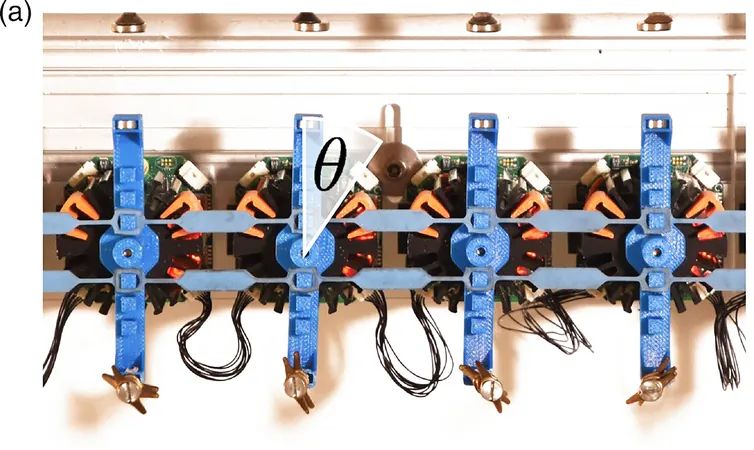
Revolutionary 'Breathing' Solitons Set to Transform Information Transfer
2025-08-23
Author: Daniel
What Are Solitons?
Solitons are remarkable waveforms that maintain their shape and speed as they travel, refusing to break apart. This phenomenon was first documented by Scottish engineer John Scott Russell in 1834 when he observed a soliton gliding along the Union Canal.
A Game-Changing Discovery
Recent research introduces a game-changing variant of the soliton — a 'breathing soliton' that not only pulses but also functions in environments where energy typically dissipates. This breakthrough was spearheaded by Jonas Veenstra and his team from the University of Amsterdam’s Institute of Physics, collaborating with fellow researchers in London and Marseille.
The Struggles of Classic Solitons
Historically, the classic soliton has been hindered by energy losses in real-world materials, causing it to eventually fade away. The original mathematical foundation for solitons was established by the Korteweg-de Vries (KdV) equation in 1895, providing a framework for understanding solitary wave packets across various fields of physics.
What's Different This Time?
The Amsterdam research team created a unique metamaterial designed to intentionally break symmetry. This innovation, termed 'nonreciprocity', allows wave propagation that differs in each direction, setting the stage for the creation of these pulsing 'breathers' that remain stable despite energy loss.
Engineering Breathing Solitons
The experimental setup featured a series of 50 active oscillators linked with elastic bands, driven by tiny motors that facilitated neighboring units to interact. By engineering asymmetric couplings, the researchers developed unidirectional waves that maintain coherence during travel. Notably, the breather's oscillation operates at around 5 Hz while the envelope moves at approximately 8 units per second.
Understanding Their Dynamics
To elucidate the mechanics behind these breathing solitons, Veenstra's team employed critical equations from nonlinear physics, such as the sine-Gordon equation and the nonlinear Schrödinger equation. Their findings reveal that the delicate balance of energy input and loss is crucial for maintaining the wave’s stability.
Why Discreteness Is Key
In contrast to continuous materials where solitons can only thrive under strict conditions, this study concluded that discrete systems offer greater stability for these waves. This adaptability is crucial for real-world applications, as most physical materials consist of distinct parts.
Potential Applications Are Limitless
These breathing solitons are not mere theoretical concepts; they have practical implications for transmitting information and energy efficiently, particularly in advanced optical devices. Envision their use in distributed sensors, robust communication pathways for soft robotics, or innovative energy-harvesting systems.
A Step Forward in Physics
Building on previous breakthroughs that allowed solitons to move in a single direction, the study underscores the importance of nonreciprocal interactions in contemporary physics. As our understanding of wave behavior continues to evolve, so too do the possibilities for applications in optics, acoustics, and beyond.
A New Era of Research
The insights gained from this research promise to steer future experiments towards new heights, including investigations into two-dimensional nonreciprocal oscillator surfaces. Published in Physical Review X, this work reveals not just the resilience of solitons but also their transformative potential in technology.


 Brasil (PT)
Brasil (PT)
 Canada (EN)
Canada (EN)
 Chile (ES)
Chile (ES)
 Česko (CS)
Česko (CS)
 대한민국 (KO)
대한민국 (KO)
 España (ES)
España (ES)
 France (FR)
France (FR)
 Hong Kong (EN)
Hong Kong (EN)
 Italia (IT)
Italia (IT)
 日本 (JA)
日本 (JA)
 Magyarország (HU)
Magyarország (HU)
 Norge (NO)
Norge (NO)
 Polska (PL)
Polska (PL)
 Schweiz (DE)
Schweiz (DE)
 Singapore (EN)
Singapore (EN)
 Sverige (SV)
Sverige (SV)
 Suomi (FI)
Suomi (FI)
 Türkiye (TR)
Türkiye (TR)
 الإمارات العربية المتحدة (AR)
الإمارات العربية المتحدة (AR)